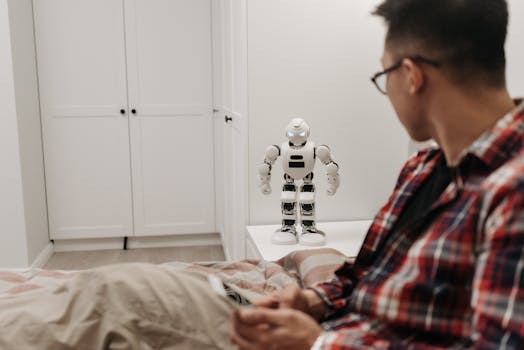
Smart Homes 2025: The Rise of AI-Driven Devices
Smart Homes 2025: The Rise of AI-Driven Devices is revolutionizing the way we live and interact with our living spaces. With the integration of artificial intelligence (AI) and machine learning (ML) algorithms, smart homes are becoming increasingly intelligent, efficient, and responsive to our needs.
Introduction to Smart Homes
A smart home is a residence that is equipped with advanced technologies and devices that can be controlled and monitored remotely. These devices can include thermostats, lighting systems, security cameras, and entertainment systems, among others. The primary goal of smart homes is to provide a convenient, comfortable, and secure living environment for its occupants.
The Rise of AI-Driven Devices
In recent years, there has been a significant increase in the development and adoption of AI-driven devices for smart homes. These devices are capable of learning and adapting to the preferences and behaviors of the occupants, allowing for a more personalized and efficient living experience. Some examples of AI-driven devices for smart homes include voice assistants, smart thermostats, and security systems with facial recognition capabilities.
Benefits of AI-Driven Devices in Smart Homes
The integration of AI-driven devices in smart homes offers numerous benefits, including:
- Increased convenience and comfort: AI-driven devices can learn and adapt to the preferences and behaviors of the occupants, providing a more personalized and comfortable living experience.
- Improved energy efficiency: AI-driven devices can optimize energy consumption by learning and adapting to the energy usage patterns of the occupants.
- Enhanced security: AI-driven devices can detect and respond to potential security threats, providing an additional layer of protection for the occupants and their property.
- Increased property value: Smart homes with AI-driven devices can increase the property value, making them more attractive to potential buyers.
Challenges and Limitations of AI-Driven Devices in Smart Homes
While AI-driven devices offer numerous benefits, there are also challenges and limitations to consider. Some of the challenges and limitations include:
- Privacy concerns: The use of AI-driven devices in smart homes raises concerns about data privacy and security.
- Compatibility issues: AI-driven devices may not be compatible with all smart home systems, which can limit their functionality and effectiveness.
- High upfront costs: The cost of purchasing and installing AI-driven devices can be high, making them inaccessible to some homeowners.
- Dependence on technology: The reliance on AI-driven devices can create a dependence on technology, which can be problematic if the devices fail or are compromised.
Conclusion
In conclusion, Smart Homes 2025: The Rise of AI-Driven Devices is transforming the way we live and interact with our living spaces. While there are challenges and limitations to consider, the benefits of AI-driven devices in smart homes cannot be ignored. As technology continues to advance and improve, we can expect to see even more innovative and efficient solutions for smart homes.




